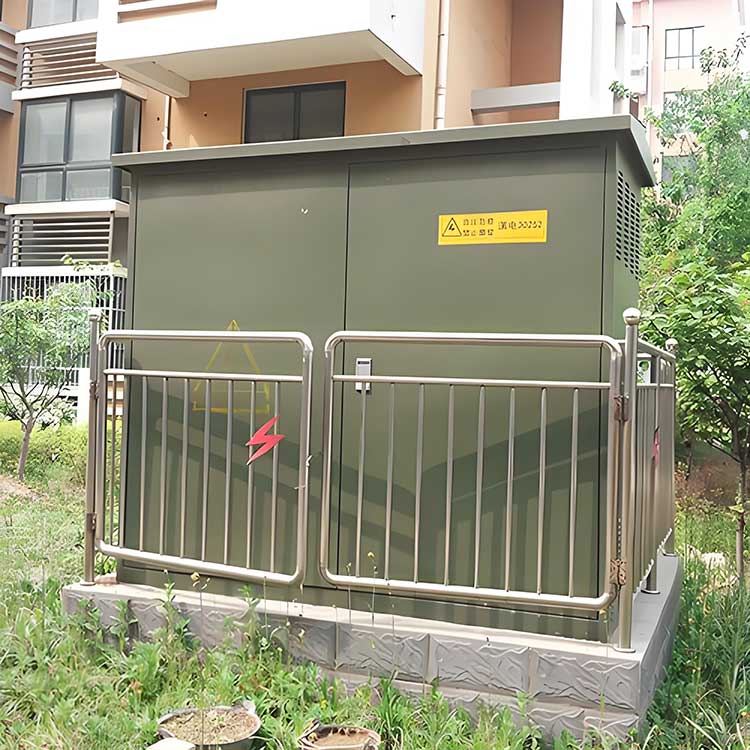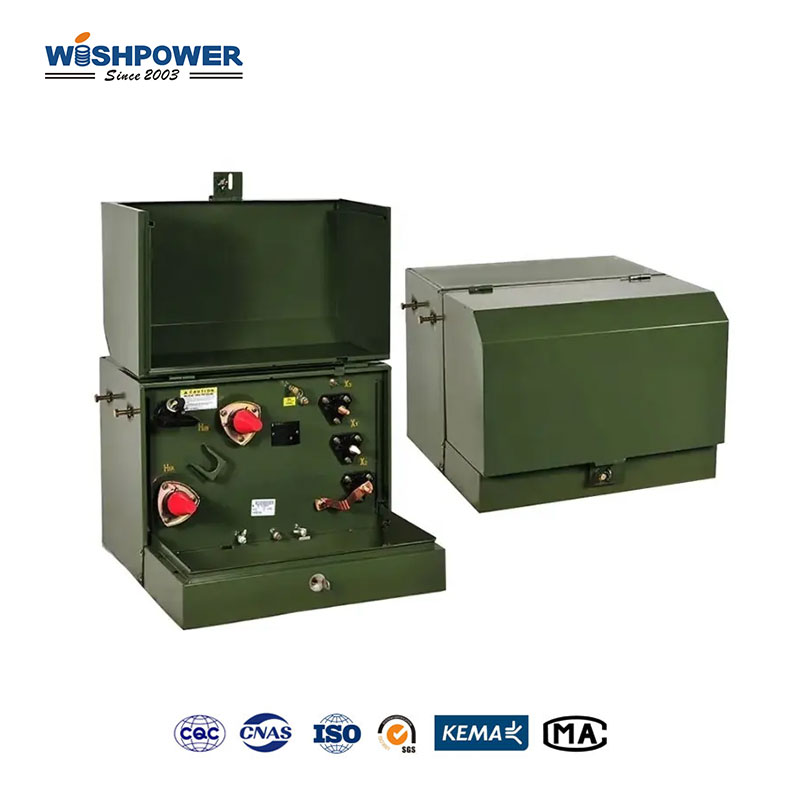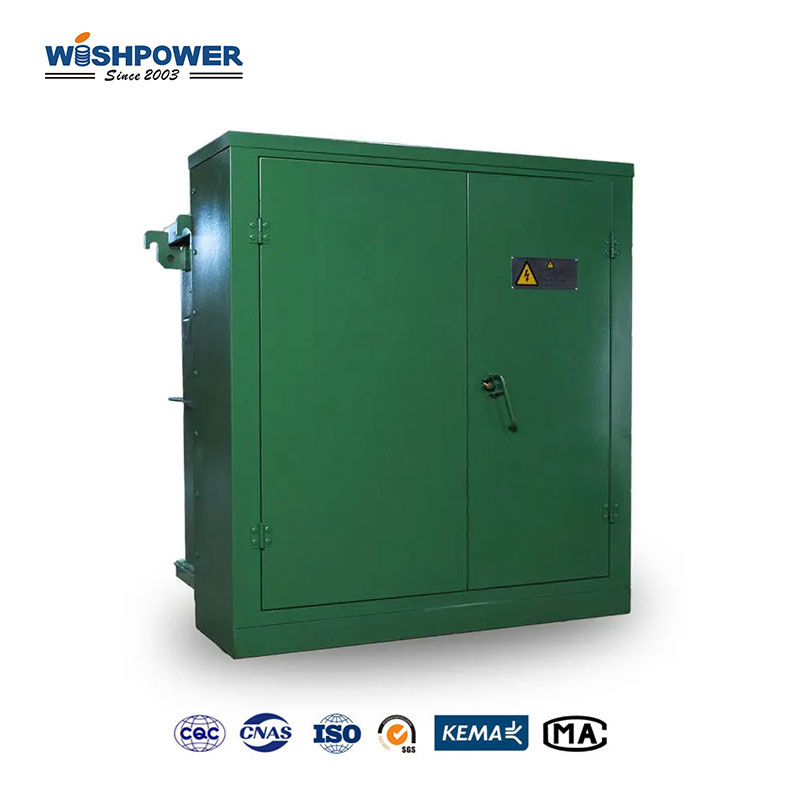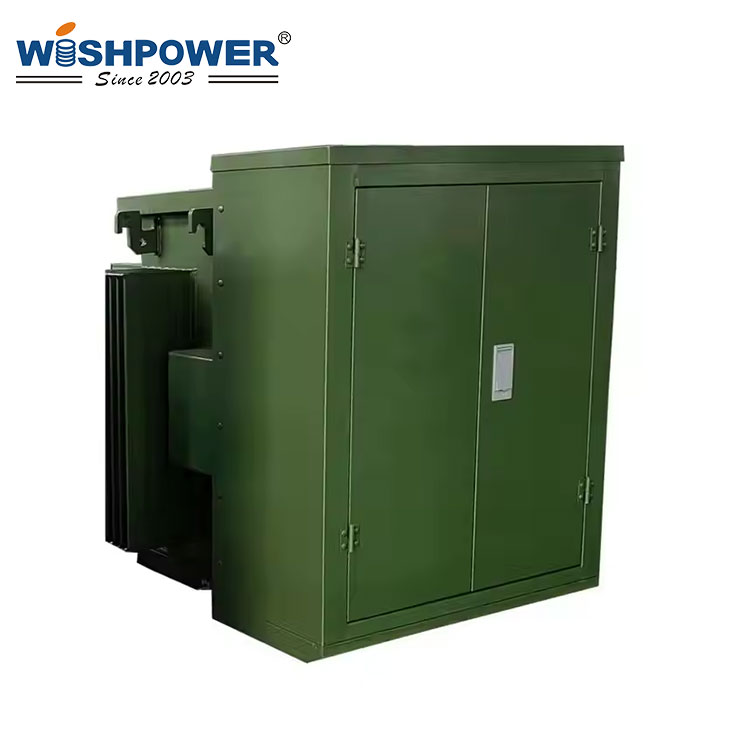Pad-mounted transformers are used in many power distribution systems they can be applied particularly in residential, industrial, and commercial areas. These transformers are mounted onto a concrete pad in the ground, and enclosed in a secure, tamper-proof metal casing. They are undisputed for functionality and reliability but raised concerns about their safety.

What are Pad-mounted Transformers?
Medium voltage electricity (typically between 10-35 kV) is stepped down by pad-mounted transformers to carrying voltages of 4.16, 12.47, 14.4, or 24.9 kV, which are appropriate for end-user applications such as powering homes, businesses, and small industrial facilities. Thanks to their compact design and ground-mounted mounting, they are a vital part of underground power distribution networks. Our metal casing shields the internal components – transformer core and coils – to help make sure it is operating safely and conveniently serviced.
Key Safety Features
Tamper-proof Design
Access panels on pad-mounted transformers are secured to keep them from unauthorized entry. The locks are designed to prevent tampering and vandalism for all but the qualified personnel.
Grounding and Insulation
The key safety feature of pad-mounted transformers is proper grounding. It makes sure that the stray current is diverted away from your body, as it cannot hurt you. In addition, insulating bushings and cables reduce exposure to live parts and make the overall system more safe.
Weatherproof Enclosure
Bench-mounted transformers have a rugged metal enclosure that is weatherproof and protects internal components from all environmental factors, like rain, snow, or extreme temperatures. It may be designed in such a way that it will not only provide reliable performance but will also prevent accidental contact with live parts.
Fault Indicators and Protection Devices
Fault indicators, surge protectors, and other such machinery that detect and isolate faults in the electrical system are quite common as they are mounted on most bench-mounted transformers. Features included to prevent the revelation of potential hazards such as overloads and short circuits.
Safety Concerns and Misconceptions
Proximity to Residential Areas
In community locations, the installation of bench-mounted transformers is sometimes concerns regarding them being unsafe near homes, playgrounds, and public spaces. Unfortunately, their design is tamper-resistant and they are in a protective enclosure, thereby reducing risks considerably.
Electromagnetic Fields (EMF)
Bench-mounted transformers emit low levels of electromagnetic fields just as all electrical equipment does. But in harm’s way are the EMFs which while high, are well below international safety standards, steadily decrease with distance, and don’t pose any meaningful dangers to residents in the area.
Oil Leakage
Mineral oil used for cooling on some bench-mounted transformers does have a tendency to occasionally leak because damage or wear to the unit causes it. Modern use of nontoxic, biodegradable oils and sealing systems to further reduce environmental and safety potential impacts makes them safer.
Best Practices for Ensuring Safety
Regular Maintenance
Of course, utilities and operators are scheduled to do routine inspections and maintenance of the transformer to make sure the module is working the way it´s supposed to. It includes looking for wear, and oil leaks, and that the enclosure is intact.
Proper Installation
Pad-mounted transformers should be mounted on a level stable surface with adequate clearance from adjacent structures, vegetation, and sidewalks. The safety and reliability demands a high level of compliance with local codes and regulations.
Public Awareness
It is supposed to educate the public about pad-mounted transformers so that they don’t accidentally damage or misuse them. A clear warning sign and label on the enclosure tell people to keep a safe distance.
Safe Placement
The transformers should be placed where the risk of accidental contact is minimized, not in high-traffic areas, for example, far from, barriers. Additionally, proper landscaping can be functional, as well as attractive, and can help in terms of safety.
Comparison with Overhead Transformers
Pad-mounted transformers have their own advantages over overhead transformers regarding safety. Unlike overhead transformers — mounted on poles that may pose risks from falling debris or line damage during storms — pad-mounted transformers are surrounded by the ground. The enclosed design protects them against external elements and weather conditions.
Are pad-mounted transformers safe?
The pad-mounted transformer is a safe, reliable, and integral part of power infrastructure today. It has a rugged enclosure and fail-safe mechanisms, and they’re compliant with international standards. These transformers can be regularly maintained and if installed properly, can continue to supply power efficiently, and to serve the safety and well-being of the communities served.
If you have different opinions or want to know more, please leave a message on the website or contact us directly at info@wishpower.net

















